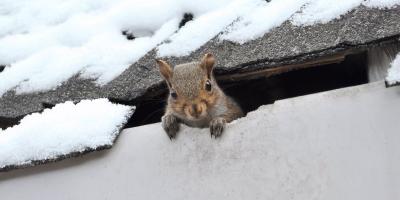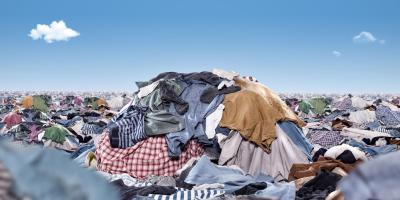Something Spongy on My Trees

This spring as conditions warm up and homeowners begin to conduct spring cleanup chores, they may come across a beige “spongy” material attached to the bark of trees. This spongy material is an egg mass, and most likely that of the newly named Spongy Moth (formerly known as the Gypsy Moth). Within that spongy mass there are up to 500 viable eggs that will soon emerge into tiny caterpillars.
First instar (stage) caterpillars are hard to see because they are so tiny (1/16th inch). However, these tiny caterpillars will soon grow to a very noticeable and destructive size of 1.5 to 2.5 inches. Spongy moth caterpillars (SMCs) are highly efficient eating machines and can defoliate (strip trees bare of leaves) entire forests within one season. On private property, these caterpillars execute the same level of destruction, and just when you think your trees will provide shade from the hot summer sun, they end up partially or completely defoliated struggling to generate a second leaf.
Initially, trees will break bud as they normally do in the spring. Foliation will proceed as normal in the early stages without notice of damage. Simultaneously, the spongy moth caterpillars will emerge from the eggs. Many will migrate to other forested areas by climbing high up the tree and launching into strong winds that carry them miles from their birth site on silken threads they produced. This method of “parachuting” is the primary way spongy moth infestations spread and end up in an area that had no issues the previous season.
When hardwood trees are defoliated for the first time, most will generate a second leaf to survive the attack. Trees require their leaves to photosynthesize energy, remain healthy, and grow. Without leaves, trees must conserve their limited stored energy sources to survive. Once the tree is depleted of all energy stores, it is likely to die. Trees also become highly vulnerable to secondary attack from disease and insects when they are weakened. Spongy moths do kill trees, especially after successive seasons of complete defoliation. They can kill conifer trees after a single season of defoliation.
Spongy Moth Imposters:
Spongy moth caterpillars are quite colorful. They have bright blue and red spots embedded in jet black hair. The hairs are long and course but cannot sting like some moth species. There are spongy moth imposters that homeowners can encounter in the spring and fall. The first of the imposters is called the Eastern tent caterpillar (ETCs). These caterpillars emerge from their eggs in the early spring ahead of the spongy moth and will create protective silken tents in the crotch of the trees (where branches meet the trunk). While these caterpillars are unsightly because of the messy web tents they create; their level of damage to the tree is minimal compared to spongy moths. To decern an ETC from a SMC, look for a prominent white stripe bordered by yellow stripes that runs from head to rear on the top of the body (spongy caterpillars don’t have this feature). ETCs have some blue and yellow coloring, but no red spotting. Their preferred host trees are crabapple, apple, and cherry. Eastern tent damage rarely kills trees but is more concerning than fall webworm because of the early season timing of their attack when trees are breaking bud.
Fall webworm caterpillars (FWWCs) make their grand appearance at the end of summer and are a sure sign that autumn is near. FWWCs are sometimes confused with spongy moth caterpillars. The difference between the two caterpillars is distinctive, plus spongy moth caterpillars have pupated and reached the moth stage when FWWCs become noticeable in trees. FWWCs are pale yellow in color with two rows of black dots and long whitish defensive hairs. FWWC tents differ from ETC tents in that they are located at the tips of the branches versus the branch and trunk junctions. FWWCs target many deciduous tree species including black walnut, crabapple, apple, cherry, etc. Their damage rarely kills a tree because defoliation is late in the season right before trees hibernate.
Are These Various Moths Covered Under a General Pest Control Program?
The spongy, eastern tent, and fall webworm moths are considered forest and ornament tree pests. When vast areas of public forests are under attack, specifically by spongy moth caterpillars, the state or federal governments retain jurisdiction over these lands. In most cases, no action is taken to control eastern tent or fall webworm caterpillars. Treatments for vast tracks of forested land are generally performed by government contracted fixed wing or helicopter aircraft.
Regarding private property treatments for these pests, a tree and ornamental applicators license is required. Most structural pest control firms do not provide tree treatments due to the licensing and specialized equipment required. Tree surgeons and arborist companies handle the management of private property trees. Do it yourselfers can use a long pole to remove reachable nests of the eastern tent and fall webworm caterpillars. Never use fire to burn off the nests/tents on trees. This technique is dangerous to trees, surrounding trees, people, and possibly property. Spongy moth caterpillars do not build tents. They go into the tree canopy at night to feed and return to the base of the tree during the heat of the day. Some commercial traps are available at retail stores to catch the caterpillars as they move up and down the tree.
In late summer to early fall, depending on geography, spongy moth adults emerge to mate and lay their spongy egg masses on tree bark throughout the forest and set next season’s repeat lifecycle into motion.
At JP Pest Services, we are concerned about your landscape and trees but are limited to structural/household pests for the services we provide. We offer a wide array of pest management programs including ticks, mosquitoes, termites, ants, rodents, bed bugs, wildlife, and more. Contact us today to schedule an inspection.



